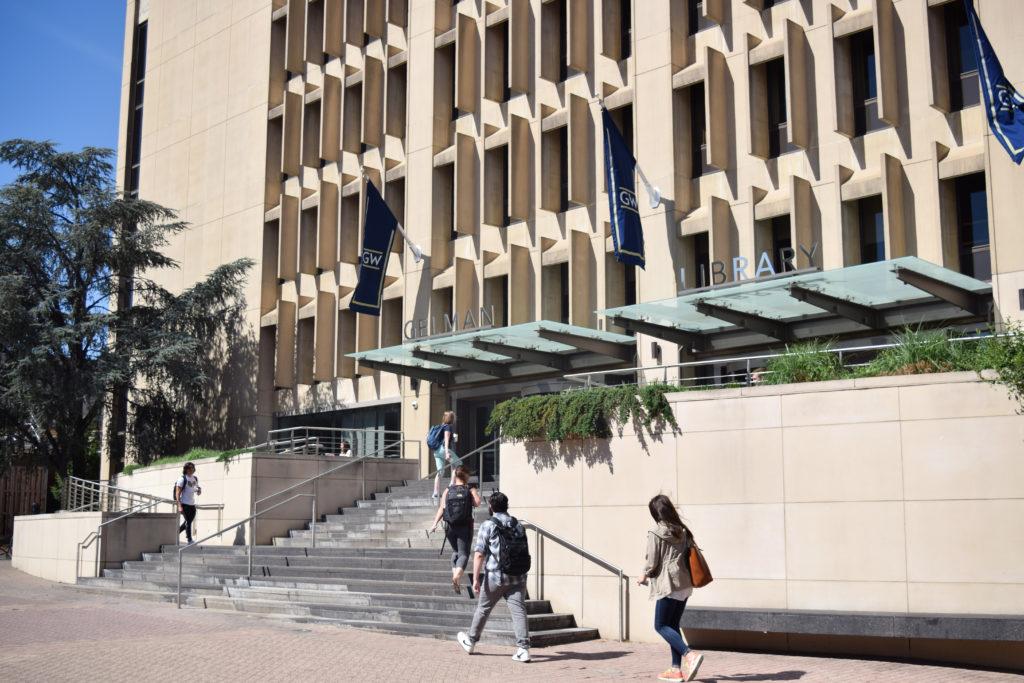Officials said The New York Times has been the most popular news subscription among the GW community with nearly two million views since they began offering the service last November.
Students, faculty and staff received free digital access to three of the nation’s most recognizable newspapers — The Times, The Washington Post and The Wall Street Journal — last fall. Officials said University data on access to the subscriptions show that The Times recorded nearly 2 million page views, followed by The Wall Street Journal with more than 250,000 and The Post at nearly 110,000 between Nov. 6 and April 30.
Mark Diaz, the University’s chief financial officer, said the digital news subscription access is an example of several ways administrators have continued to “enhance service” with more community engagement and information through digital news. He said the feedback about the subscription service has “only been positive,” and officials have received suggestions to expand to other publications.
“We are committed to continuing to provide these resources to the community,” he said in an email. “While there are no immediate plans to expand beyond the initial three, we will continually assess opportunities to provide reliable and credible resources that will inform the GW community.”
Annual digital student subscriptions to The Wall Street Journal and The Times typically cost $48, and a subscription to The Post costs $12 for the first year and $60 every year after.
The Student Association Senate passed a resolution last April calling on officials to provide students with access to newspaper subscriptions, and officials announced the launch of the service in November. The University halted a similar program in 2011 that offered students newspapers at their residence hall doors.
Robing Delaloye, the associate dean of student success and communications, said The Times amassed more than 6,500 active unique subscribers from the GW community, while The Wall Street Journal attracted 5,315 “activated users” as of the end of last month. University access to The Post does not require users to create accounts but is only available via their website.
The subscription service provides users mobile access to The Times and The Journal but not The Post.
GW Libraries also offers full online access to other news sources like The Chronicle of Higher Education and The Financial Times for campus users or through the GW VPN.
Students who have taken advantage of the free digital subscriptions said access to three premier newspapers has helped them stay updated on current events and inform their class discussions.
Sophomore and Student Association Sen. Gabriel Young, CCAS-U, said he has used The Times and The Post for his homework assignments and reads the newspapers in his free time. He said being stuck behind paywalls freshman year was frustrating because he would sometimes need access to information in the newspapers to complete class projects.
“I’m very grateful that we have it now, and I was initially surprised when I came in freshman year to be behind paywalls, especially during the election cycle,” he said. “The fact that we have it now, it remedies that and makes me more comfortable being at GW.”
He said the SA currently has no plans to call on officials to expand the subscription service to include other sources as the University continues to transition through a recovery from the COVID-19 pandemic.
“That is definitely a conversation that could be had at a later date as these three new sources were the main ones that students have been requesting for the longest time,” he said.
Mariko Hokamura, a sophomore majoring in sociology, said she’s accessed The Times and The Post daily since GW began offering the student subscriptions last fall. She said she could keep track of the topics relevant for her developmental psychology class this semester with the parenting and health sections of The Times.
“I think it’s important for any student to be engaged in what’s happening in the news, particularly I think because we are in Washington D.C.,” she said. “Knowing what’s going on around us is really important.”
She said she has used The Times subscription more than the other publications because she can access news stories through her phone, while the lack of mobile access for The Post has been “inconvenient.”
“It’s just very complicated for the Washington Post, and you can’t use it on your phone,” she said. “So that’s why I don’t check it as often, because I have to go through so many additional steps.”
Roni Edni, a sophomore planning to major in English, said she was initially subscribed to both The Times and The Wall Street Journal when the service first became available last fall. She said she unsubscribed to The Wall Street Journal a month later because she did not have the knowledge or interest to understand some of the news stories, like updates on the stock market.
She said reading The Times has allowed her to stay informed on news which has been helpful for her philosophy class that ties in current events during discussions and breakout groups.
“A lot of the times, professors will assign articles, and sometimes they don’t realize that students might not have access to certain new subscriptions,” she said. “Being informed and staying updated with current events has been helpful for productive discussion in many of my classes.”







